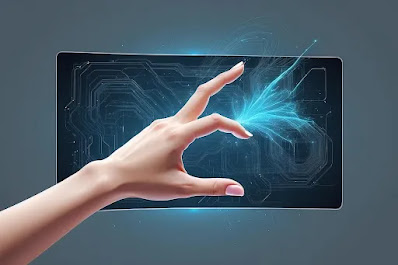Innovations in Touchscreen Technology
Touchscreen technology has become an integral part of our daily lives, revolutionizing the way we interact with electronic devices. From smartphones to interactive kiosks, touchscreens offer intuitive interfaces that simplify navigation and enhance user experience. In this article, we’ll explore the latest innovations in touchscreen technology and their implications for various industries.
Traditional Touchscreen Technologies
Traditionally, two main types of touchscreen technologies have dominated the market: resistive and capacitive touchscreens. Resistive touchscreens rely on pressure detection to register input, making them suitable for devices like ATMs and industrial control panels. Capacitive touchscreens, on the other hand, detect changes in electrical fields to track touch input, offering better responsiveness and multitouch support, ideal for smartphones and tablets.
Emerging Innovations in Touchscreen Technology
Recent years have witnessed remarkable advancements in touchscreen technology, leading to the development of novel features and functionalities. Flexible and foldable displays, once considered futuristic concepts, are now a reality, offering new possibilities for smartphones and wearable devices. In-display fingerprint sensors have also gained traction, providing a seamless biometric authentication solution without the need for dedicated hardware buttons.
Another notable innovation is haptic feedback technology, which simulates tactile sensations to mimic the feel of physical buttons or textures on a touchscreen surface. This technology enhances user interaction by providing sensory feedback, making virtual experiences more immersive and engaging. Furthermore, gesture recognition capabilities enable touchless interaction, allowing users to control devices through hand movements or gestures, opening up new avenues for intuitive interaction in automotive interfaces and smart home systems.
Advantages of New Touchscreen Innovations
The integration of advanced touchscreen technologies offers several benefits for both consumers and manufacturers. Enhanced user experience is perhaps the most significant advantage, as innovative features such as foldable displays and haptic feedback create more immersive and intuitive interfaces. Moreover, these technologies contribute to improved durability and functionality, making devices more resistant to wear and tear while expanding their range of applications.
Applications of Advanced Touchscreen Technology
The versatility of advanced touchscreen technology extends across various industries, with applications ranging from consumer electronics to automotive and healthcare. In the consumer electronics sector, smartphones and tablets equipped with the latest touchscreen innovations offer enhanced productivity and entertainment features, driving demand in the competitive market landscape. Wearable devices, such as smartwatches and fitness trackers, leverage touchscreen technology to deliver real-time health monitoring and personalized experiences to users.
In the automotive industry, touchscreen interfaces have become standard features in modern vehicles, enabling intuitive access to navigation, entertainment, and vehicle controls. Touchscreen displays integrated into dashboard systems provide drivers with seamless access to information and entertainment options while minimizing distractions on the road. Additionally, touchscreen technology is increasingly utilized in healthcare settings for patient monitoring, medical imaging, and interactive patient education, facilitating more efficient and personalized care delivery.
Challenges and Future Trends
Despite the rapid progress in touchscreen technology, several challenges remain to be addressed, including durability, power efficiency, and cost-effectiveness. Flexible displays, while offering exciting possibilities for design innovation, require robust materials and manufacturing processes to ensure long-term reliability and performance. Power consumption is another concern, especially in portable devices where battery life is critical for user satisfaction.
Looking ahead, future trends in touchscreen technology are likely to focus on overcoming these challenges while exploring new avenues for innovation. Breakthroughs in materials science and manufacturing techniques may lead to thinner and more durable displays, while advancements in power management and efficiency could extend battery life and enhance overall device performance. Additionally, emerging technologies such as augmented reality (AR) and virtual reality (VR) are expected to drive demand for advanced touchscreen interfaces with enhanced sensory feedback and interactive capabilities.
Conclusion
Innovations in touchscreen technology continue to redefine the way we interact with electronic devices, offering new possibilities for design, functionality, and user experience. From flexible displays to haptic feedback technology, the latest advancements enable more intuitive and immersive interactions across various industries. As researchers and manufacturers push the boundaries of what’s possible, we can expect to see even more exciting developments in touchscreen technology in the years to come.
FAQs
What are the main types of touchscreen technologies?
- Resistive and capacitive touchscreens are the two main types of touchscreen technologies, each with its own advantages and applications.
How do flexible displays work?
- Flexible displays use advanced materials and manufacturing techniques to create bendable screens that can adapt to different form factors, offering new possibilities for device design and user interaction.
- What is haptic feedback technology?
- Haptic feedback technology simulates tactile sensations to enhance user interaction with touchscreen devices, providing sensory feedback through vibrations or other stimuli.
What are the benefits of in-display fingerprint sensors?
- In-display fingerprint sensors offer a seamless biometric authentication solution without the need for dedicated hardware buttons, enhancing device security and convenience for users.
- How are touchscreen interfaces utilized in the automotive industry?
- Touchscreen interfaces in vehicles provide drivers with intuitive access to navigation, entertainment, and vehicle controls, enhancing the driving experience while minimizing distractions on the road.
Read Also:
Advancements in Battery Life and Efficiency
AI Integration in Personal Computers
ADVANCEMENTS, CUTTING-EDGE, DISPLAYS, FUTURE, GADGETS, INNOVATIONS, INTERACTIVE, PROSPECTS, TECHNOLOGY, TOUCHSCREEN, TRENDS, UPDATES

.jfif)
.jfif)

Comments
Post a Comment